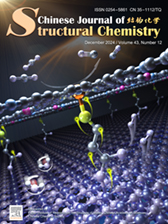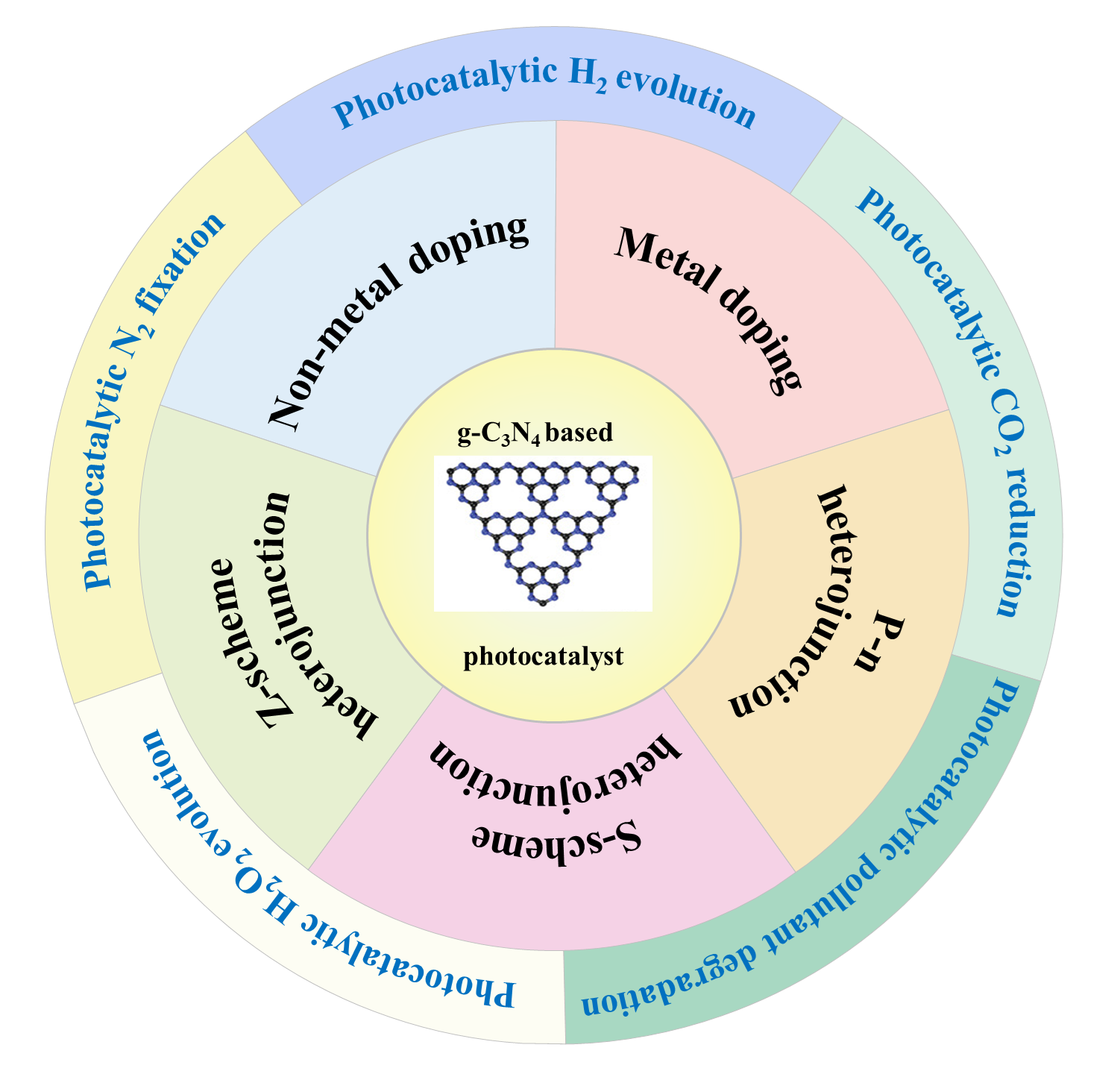
Alkyl-linked TiO2@COF heterostructure facilitating photocatalytic CO2 reduction by targeted electron transport
Jiangqi Ning, Junhan Huang, Yuhang Liu, Yanlei Chen, Qing Niu, Qingqing Lin, Yajun He, Zheyuan Liu, Yan Yu, Liuyi Li* Submit a Manuscript
Yanghanbin Zhang, Dongxiao Wen, Wei Sun, Jiahe Peng, Dezhong Yu*, Xin Li*, Yang Qu, Jizhou Jiang*
Chin. J. Struct. Chem., 2024, 43: 100469. DOI: 10.1016/j.cjsc.2024.100469
December 15, 2024
g-C3N4; Photocatalysis; Enhancement strategies; In-situ characterization; Theoretical simulations
ABSTRACT
g-C3N4 is a promising non-metallic photocatalyst recognized for its unique structural and physicochemical properties. Recent reviews have addressed g-C3N4-based photocatalysis; however, the rapid progress in big data and artificial intelligence has significantly accelerated the design, synthesis, and optimization of these materials. Machine learning, theoretical simulations, and advanced in-situ characterization techniques have deepened our understanding of their photocatalytic mechanisms. This review critically evaluates advancements in g-C3N4-based photocatalysts over the last two to three years, focusing on strategies to improve photogenerated charge separation, expand light absorption, and enhance stability and catalytic efficiency. It discusses cutting-edge in-situ characterization methods alongside machine learning approaches for predicting and optimizing applications in photocatalytic H2 evolution, CO2 reduction, pollutant degradation, H2O2 production, and nitrogen fixation. Finally, it proposes prospective strategies for further enhancing the performance of g-C3N4-based photocatalysts, aiming to guide the design of high-performance two-dimensional carbon-based photocatalysts.






